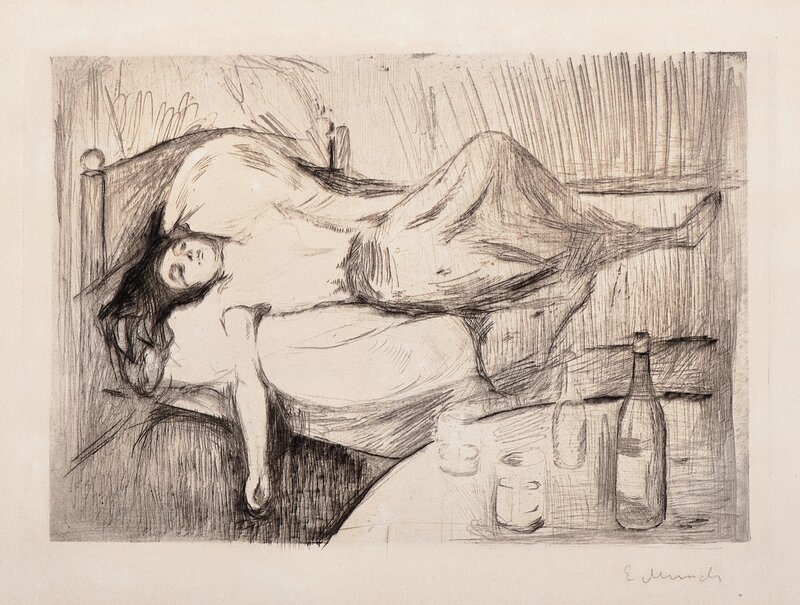LITERATURE: Arne Eggum: Edvard Munch. Paintings ??? sketches and studies, Oslo 1984, 2. Ed. 1986.
Gerd Woll: Edvard Munch Complete Paintings, London 2009.
Gerd Woll: Edvard Munch ??? The complete graphic Works, Oslo 2012, cat.no. 10.
Ingeborg W. Owesen: «Edvard Munch Between Gender, Love, and Women???s Rights», Munch 150. Edvard Munch 1863-1944. Marking of the 150th anniversary of the birth of Edvard Munch, exhibition catalogue the Nasjonalgalleriet and the Munch-museet, Oslo, 2 June-13 October 2013, p. 296-305.
The print is a reversed version of a painting of 1894 (Nasjonalmuseet, Oslo, Woll 348). A lost painting from the 1880s can be identified in an exhibition photograph from 1892-93 (Woll 258). The subject also appears in an early drawing (MM T 2348). Woll 2012, p. 44.
This «new», liberated woman also wanted to let herself go and have fun, and Munch has depicted her in «The Day After» (1894, cat. 51 (the painting Woll 348)), in which a woman is seen lying in bed, hung-over, with the bottles from yesterday???s party ranged in the table in front of her. This type of independent woman is not relegated to a virtuous and motherly role. Here Munch portrays her as man???s equal, she too can experience euphoria, whether triggered by intoxicants or sex. In Munch???s pictorial universe we find women who enjoy themselves on a par with men. In this case the hung-over woman on the bed is rendered with neither disdain nor admiration, the tacit observation being that, like their male counterparts, women also must face the inevitable day after. P. 303.
It seems to me in our connection, all the same, that Munch in his rendering of her, depicts a stark contrast between lovely and awful, attractive and disgusting. The image seems to resemble motifs from the «Salon» from Munch???s own time, where the woman often was shown sensually seductive, but Munch doesn???t turn it into «fine art» of his day, he shows the woman totally down, she has let it all hang out and has lost all control, and that is also what he renders.
The picture seems to show, as Eggum writes in his comment on the theme ???Vampire???:
??? Munch???s special ability of expressing at one and the same time positive and negative feelings in a motif. Eggum, s. 112.
